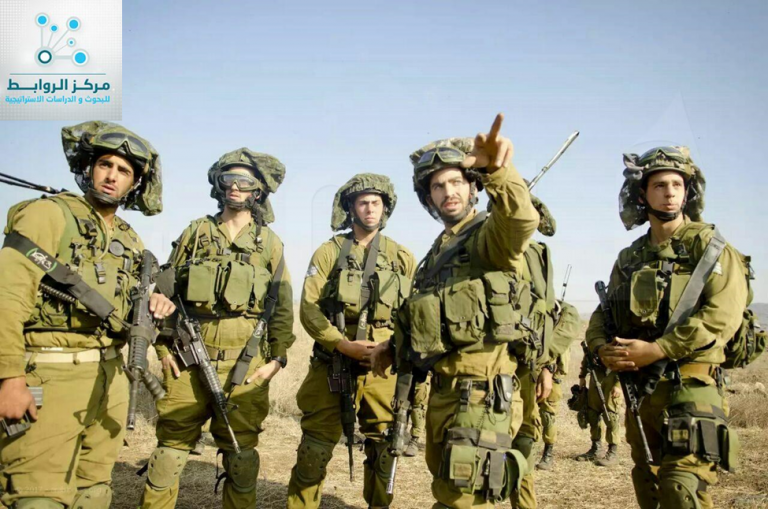Although there is no desire on the part of all parties to escalate, 2018 may see war on one of three fronts (Syria, Lebanon and the Gaza Strip), as the instability of the three fronts could lead to escalation of events and confrontation. The new approach is to strengthen US “withdrawal” from the Middle East. While expectations for Trump’s return to the region have risen, the US administration’s practice indicates to promote a withdrawal from the middle east in return for focusing on Asia , China’s rise, and the confrontation of North Korea, and in case of a military confrontation with Pyong Yang , it “will be reflected in general on the countries of the region, so that the United States is committed to focusing on what is going on there, and would not have ample time to go deeply into the problems of the region , Israel will not be in isolation from that in the event of a confrontation on one of the three fronts.
First: North Front.
Contrary to the estimates of the Israeli National Security Research Center of 2017, which indicated that there is little likelihood of a war involving Israel, the Center estimates, and many Israeli analysts for security and military affairs, indicate an increased likelihood of war in 2018 on the northern front involving Iran, Syria and Lebanon.
A set of cumulative factors reinforce this possibility where Tehran is working hard to strengthen its presence in Syria near the border with Israel “Golan Heights”, and in the same context established two military bases in Syria, the first in the city of “Alkaswa” near Damascus, and the second is Navy in the port of Latakia, Israel’s targeting of the Iranian base in the city of Al-Ksawah is a shift from the threat and warning stage to operations, and Israel is serious about not allowing Iran to consolidate its presence in the region, even if it involves a military escalation.
Iran’s construction of a surface-to-surface missile system in Syria and Lebanon is a threat to the Israeli home front from the three fronts through its proxies, as well as the Syrian regime’s control of large areas is providing Hizbollah another road to Lebanon, enabling it to transfer ammunition and equipment and Israel is carrying out continuous operations to target the transfer of equipment to Hezbollah.
Any of these factors could be out of control at any moment and lead to the ignition of the northern front. In anticipation of such a possibility, Israel is proactively preparing, beginning with intensifying military exercises in the army in simulating the nature of the Lebanese and Syrian environment, and signed with the United States on December 12 , 2017, a joint memorandum of understanding that provides for full cooperation to confront the nuclear, missile and other threatening activities of Iran and the formation of (4) includes joint groups to confront various aspects of the Iranian threat.
The first deals with Iranian activity in Syria, Tehran’s support of Hezbollah, the second to counter Iran’s nuclear ambitions, the third to counter the ballistic missile program, efforts to build precision missile systems in Syria and Lebanon, and the fourth to prepare for any escalation by Iran or Hezbollah .
Second: the southern front “Gaza Strip”.
Since the end of the war in 2014, Israel has been neutralizing the strategic ways “tunnels” of the Palestinian resistance movements. In this context, it has established the underground wall along the border with Gaza, which is equipped with sensors for early detection of tunnels. It has recently developed a technology that can detect tunnels, and it has been successfully tested two times during the last period, and according to Israeli estimates , tunnels will be completely neutralized until the end of 2018, neutralizing the strategic ways of the Palestinian resistance puts it under pressure, and may push them to use the remainder of the tunnel system before Israel completely dismantle it .
The estimates of Israeli security establishment indicate that the state of calm is a deceptive calm. Hamas continues to plan attacks and any operation carries the potential for a big explosion. The Gaza Strip includes a wide range of factors that could push the events towards deterioration and lead to a military confrontation.
In addition, the faltering reconciliation and Yahya al-Senawar’s statements about its collapse is a sign of the next danger. The renewal of internal crisis and the political and economic crisis that Hamas will face in the event of a failed reconciliation will push it to a corner where there is no choice but to wage another military round against Israel.
This coincides with the Iranian encouragement of the Palestinian factions to escalate against Israel after the declaration of Jerusalem (al-Quds), and this was evident in the connection of Kassem Soleimani, and the subsequent firing of rockets at Israel, which could make a mistake and lead to a confrontation. However, the current wave of protests in Iran and not controlling them may lead it to retreat to deal with internal affairs, and less attention to other issues.
Conclusion:
Until now, all parties are not concerned with going to war, However, events and instability on the three fronts may develop and escalate to the outbreak of war. The Gaza Strip front is considered the first candidate for escalation as facing a complex, political, economic and social threat. The north front comes in the second rank in terms of escalation of the military confrontation, but if ignited , it will be very serious and likely to be widen with the participation of Iran, and the matter remains dependent on the support of the United States to Israel in the event of the outbreak of any of the three fronts, if the United States launched a war on “Pyong Yan “The possibility of taking the Israeli fears into account and to provide support for Israel will be less compared to previous wars.
Rawabet Center for Research and Strategic Studies

